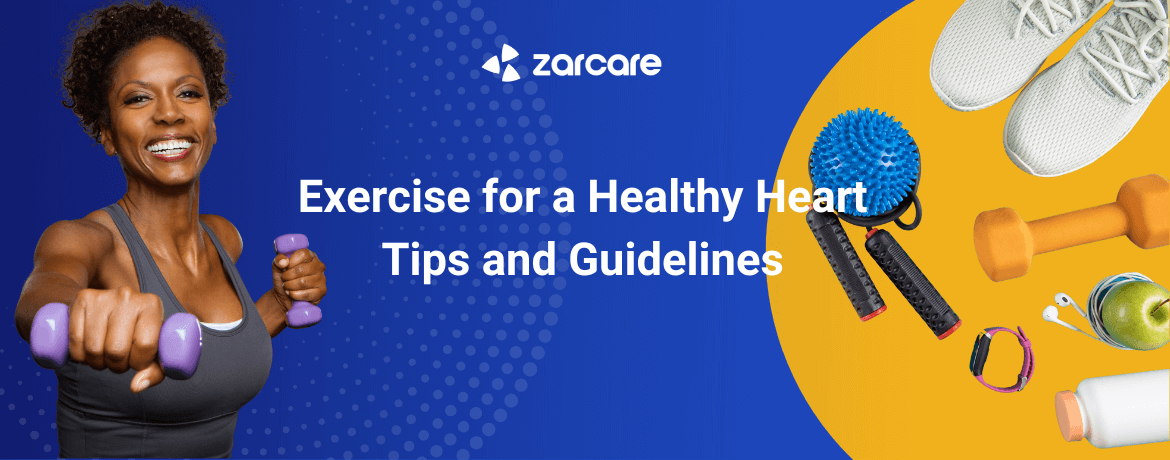Exercise for a Healthy Heart: Tips and Guidelines

Regular physical activity is one of the most effective ways to maintain a healthy heart. Exercise helps improve cardiovascular health, manage weight, reduce stress, and lower the risk of heart disease. Here are some tips and guidelines to help you incorporate heart-healthy exercise into your daily routine. Regular aerobic exercise strengthens the heart muscle, improves blood circulation, and increases the efficiency of the cardiovascular system¹. Physical activity helps reduce high blood pressure, a major risk factor for heart disease². Exercise can help lower bad cholesterol (LDL) and raise good cholesterol (HDL), reducing the risk of plaque buildup in the arteries³. Regular exercise helps maintain a healthy weight, reducing the strain on the heart and lowering the risk of obesity-related heart conditions⁴. Physical activity releases endorphins, which help reduce stress and improve overall mood. Examples: Walking, jogging, swimming, cycling, dancing. Benefits: Improves cardiovascular fitness, lowers blood pressure, and helps manage weight. Guideline: Aim for at least 150 minutes of moderate-intensity aerobic exercise or 75 minutes of vigorous-intensity aerobic exercise per week¹. Examples: Weightlifting, resistance band exercises, and bodyweight exercises (e.g., push-ups, squats). Benefits: Builds muscle mass, improves metabolism, and supports joint health. Guideline: Include strength training exercises at least two days per week¹. Examples: Yoga, Pilates, and stretching routines. Benefits: Enhances flexibility, reduces the risk of injury, and improves balance and coordination. Guideline: Incorporate flexibility and balance exercises into your routine several times a week². Start with small, achievable goals and gradually increase the intensity and duration of your workouts. Consistency is key to long-term success. Find exercises that you enjoy to make it easier to stick with your routine. Whether it’s dancing, hiking, or playing a sport, enjoyment will keep you motivated. Schedule your workouts at the same time each day to build a routine. Consistency helps make exercise a regular part of your lifestyle. Drink plenty of water before, during, and after exercise to stay hydrated and maintain optimal performance. Pay attention to how your body feels during and after exercise. If you experience pain, dizziness, or shortness of breath, stop and seek medical advice. Always start with a warm-up to prepare your body for exercise and end with a cool-down to help your muscles recover. Before starting a new exercise program, especially if you have existing health conditions or concerns, consult your healthcare provider. If you’re new to exercise or haven’t been active for a while, start slowly and gradually increase the intensity and duration of your workouts. Ensure you use proper form and technique to avoid injuries. Consider working with a fitness professional to learn the correct methods. Keep track of your heart rate during exercise to ensure you’re working within a safe and effective range. Your target heart rate zone is typically 50-85% of your maximum heart rate (220 minus your age). Incorporating regular exercise into your daily routine is essential for maintaining a healthy heart. By following these tips and guidelines, you can improve your cardiovascular health, reduce the risk of heart disease, and enjoy a more active and fulfilling life. Remember, it’s never too late to start, and every little bit of activity counts towards a healthier heart. ¹: [American Heart Association Recommendations for Physical Activity] ²: [Mayo Clinic: Heart Disease Prevention] ³: [American Heart Association: Fitness] (https://www.heart.org/en/healthy-living/fitness) ⁴: [What Exercise Is Right for Me? | American Heart Association] (https://www.heart.org/en/healthy-living/go-red-get-fit/what-exercise-is-right-for-me) Feel free to reach out if you need more information or have any questions! (1) American Heart Association Recommendations for Physical Activity in Adults and Kids (2) Fitness – American Heart Association. https://www.heart.org/en/healthy-living/fitness (3) Heart disease prevention: Strategies to keep your heart healthy https://www.mayoclinic.org/diseases-conditions/heart-disease/in-depth/heart-disease-prevention/art-20046502 (4) What Exercise Is Right for Me? | American Heart Association. https://www.heart.org/en/healthy-living/go-red-get-fit/what-exercise-is-right-for-meBenefits of Exercise for Heart Health
1. Improves Cardiovascular Fitness
2. Lowers Blood Pressure
3. Reduces Cholesterol Levels
4. Manages Weight
5. Reduces Stress
Types of Heart-Healthy Exercises
1. Aerobic Exercise
2. Strength Training
3. Flexibility and Balance Exercises
Tips for Getting Started
1. Set Realistic Goals
2. Choose Activities You Enjoy
3. Make It a Habit
4. Stay Hydrated
5. Listen to Your Body
6. Warm Up and Cool Down
Safety Considerations
1. Consult Your Doctor
2. Start Slowly
3. Use Proper Technique
4. Monitor Your Heart Rate
Conclusion
Source:
